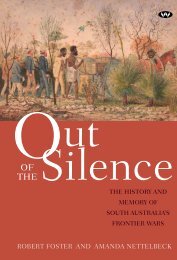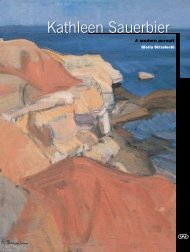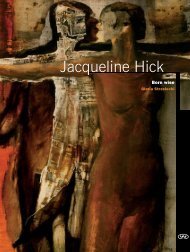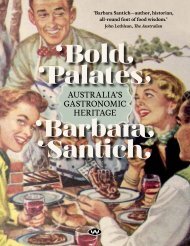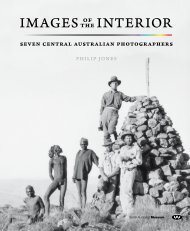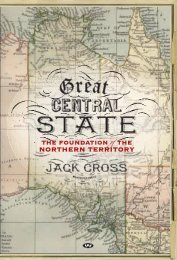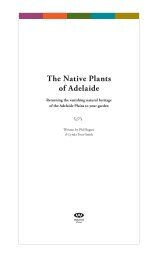bruce munday - Wakefield Press
bruce munday - Wakefield Press
bruce munday - Wakefield Press
- No tags were found...
You also want an ePaper? Increase the reach of your titles
YUMPU automatically turns print PDFs into web optimized ePapers that Google loves.
prefaceMy affair with stone walls started way back as a kid growing up in Geelong. The old GeelongGaol, quite an elegant building in its grim and gruesome way, is now heritage listed. WhatI vividly recall of that gaol was feeling reassured by the immense stack of bluestone between meand all manner of evil.I don’t know why convicts loomed large in my life, there being no family connection to that part ofAustralia’s history. But we did have connections with the Western District of Victoria and I was wellacquainted with the miles of dry-stone wall stretching out over the Stony Rises. Like many kids ofmy generation I grew up believing these walls were built by convicts. At the time my preoccupationwas not with the Herculean effort and the classical skill that these walls represented. It was with theimage of unshaven men in navy blue and white hoops stacking stones while towing ball and chainunder the watchful gaze of stern guards.So it was with a tinge of disillusionment that I read recently that convicts were not at all involvedin the building of those walls. Maybe freed ex-convicts contributed some of the labour, but moregenerally those walls were crafted by Scottish and Irish tradesmen, often brought out to Australiafor that very purpose. 1In Peru in 2006, like everyone who goes there, I pondered the amazing stone engineering andarchitectural feats of the Incas. Not just how they did it, but what must life have been like back then?What were they thinking? Was it fun or agony, satisfying or mundane? In the absence of a writtenlanguage, we are left pondering.While South Australia’s dry-stone walls are in a lesser league than those of the Inca, there is stilla case for the written word and photography to record and enhance this wonderful heritage. And yetmentioning to a friend that I was writing a book on dry-stone walls in South Australia, she burst intohysterical laughter. Wiping away the tears she spluttered, ‘I’m sure it will be a lot of fun.’I am not a historian, so a definitive history of walls in South Australia is beyond me. Nor am I ananthropologist, geographer, town planner, mason or engineer. I am a farmer with a lot of rock thatI like playing with – Kristin, my wife, says it’s an obsession, and I do confess to becoming somethingof a ‘wall spotter’. I also love seeing what other people have done with stone, marvelling at theenormity, durability, craftsmanship and diversity of their creations. And what I discovered exploring2 THOSE DRY-STONE WALLS



